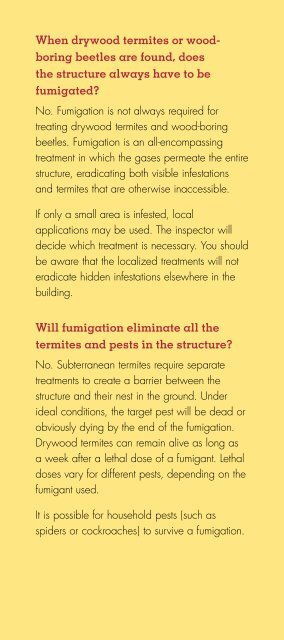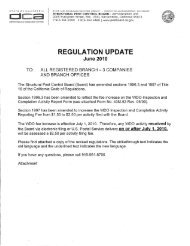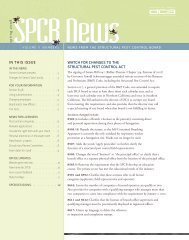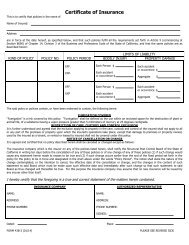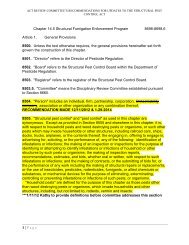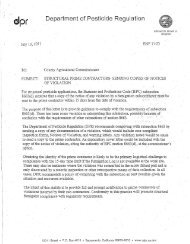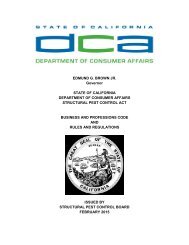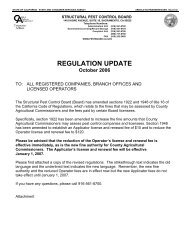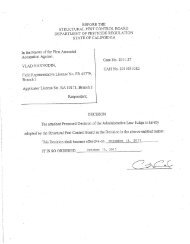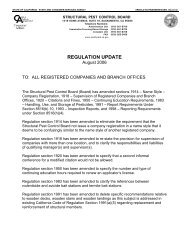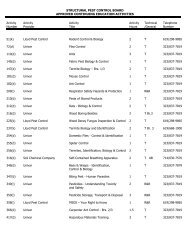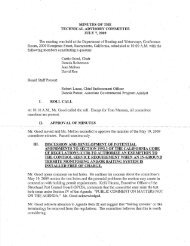Fumigation - Structural Pest Control Board - State of California
Fumigation - Structural Pest Control Board - State of California
Fumigation - Structural Pest Control Board - State of California
Create successful ePaper yourself
Turn your PDF publications into a flip-book with our unique Google optimized e-Paper software.
When drywood termites or woodboring<br />
beetles are found, does<br />
the structure always have to be<br />
fumigated?<br />
No. <strong>Fumigation</strong> is not always required for<br />
treating drywood termites and wood-boring<br />
beetles. <strong>Fumigation</strong> is an all-encompassing<br />
treatment in which the gases permeate the entire<br />
structure, eradicating both visible infestations<br />
and termites that are otherwise inaccessible.<br />
If only a small area is infested, local<br />
applications may be used. The inspector will<br />
decide which treatment is necessary. You should<br />
be aware that the localized treatments will not<br />
eradicate hidden infestations elsewhere in the<br />
building.<br />
Will fumigation eliminate all the<br />
termites and pests in the structure?<br />
No. Subterranean termites require separate<br />
treatments to create a barrier between the<br />
structure and their nest in the ground. Under<br />
ideal conditions, the target pest will be dead or<br />
obviously dying by the end <strong>of</strong> the fumigation.<br />
Drywood termites can remain alive as long as<br />
a week after a lethal dose <strong>of</strong> a fumigant. Lethal<br />
doses vary for different pests, depending on the<br />
fumigant used.<br />
It is possible for household pests (such as<br />
spiders or cockroaches) to survive a fumigation.


